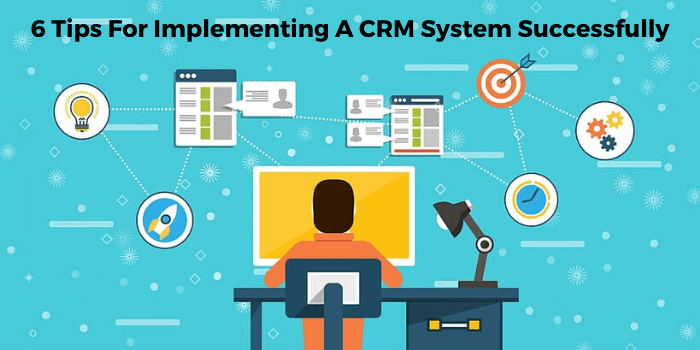With the increasing competitiveness in the global market, having the right tools to generate leads that convert to profits is equally essential to a compass that points a ship where to go.
One wrong flip in the compass needle then the ship, no matter how huge, rigid, and massive it is, will eventually sink the moment the unexpected happens. The same is through with businesses, whether it be products or services, online or offline, the wrong tool can send all those crisp dollars down the sink. Then here comes no sales, bankruptcy, then eventually the business closes. Such a horror that you don't want your business to end up, right?
To avoid such instance, go with the trend and adopt CRM System in your business.

What is CRM?
CRM (Customer Relationship Management) is a system that a business owner uses to automate the process of interaction with customers. The process includes the leads (prospect customers) receiving communications either in forms of calls, text, chat, or emails from the business owner. The communications include welcome messages, "thank you" notes, discount coupons/vouchers, invitations, and any other promotional kinds of stuff in which the leads granted permission to receive such communications.
CRM System does not only cater to new prospects but also re-engages with existing clients.
Below are some tips on how you can implement CRM Systems successfully;
1. Start With The End In Mind
Firstly, start with what you want to achieve in mind (visions, goals, targets) with your new CRM system, i.e. what will make the most difference for your business.
Some business owners say, "We need to get it in place, let's just get started and then we can make changes to achieve our target." Mind you, that's a bad idea. People do not like change, and they don't want to change twice for sure. Thus, take some time and make sure that you are putting it in the implementation at the very beginning.
It is imperative that you identify the most important outcomes and then focus on aligning your CRM with them.
2. Own your CRM

To achieve successful CRM system implementation and to put you and your team in the driver's seat, you must own your CRM solution. Your software partner should be there to help guide and coach you, ensuring your team is trained and fully empowered to drive your business to sales.
3. Establish An Organizational Structure
An organizational structure helps your business to be well-managed, efficient, and responsive to both the internal (employees) and external (clients) needs. For example;
- Executive Leaders - responsible for formulating the CRM strategy tied to business outcomes and communicate this to your business partners.
- Subject Matter Experts - have in-depth knowledge of both their respective areas of the business and CRM functionality.
- CRM Admins - understand CRM's configuration capabilities and work closely with the Subject Matter Experts to build the CRM solution.
4. Create A Comprehensive Training Plan
Training should be in place to make sure your CRM System is operated successfully. Training should help your team understood the objectives, goals, and processes. Thus, your training plan should include the three fundamental types;
- Persona Training - This training should focus on the role and position of an organization to create a harmonious workflow. Also to enhance relationship and team spirit.
- Experience Level Training - This training should aim at establishing experience levels. It should have a specific plan for neophytes, help them develop enthusiasm and excitement that will make them champions from the start. The training should put your organization on the right track.
- Reinforcement/Motivational Training - This training explains to the executives and sponsors why change is happening, what the target outcomes are, and why these are important for the business.
The trainers need to keep checking in with the users and welcoming feedback from them because they often need to hear things more than once before they grasp the end goal. Training is needed every time a new system upgrade comes out, or a specific change in the processes occurs.
5. Maintain Your Documentation
Documentation is often overlooked at CRM implementation and takes a reasonable amount of time to develop. The new processes and activities should be documented as it keeps your team on the same page.
A Standard Operating Procedure (SOP) defines, documents, and processes changes within the CRM and assists with the ongoing training, ensuring consistency in your data entry. SOP especially helps new members of sales, marketing, and customer service departments.
Furthermore, SOP's ensure that employees do things the right way from the start. It can assist with the ongoing training and help ensure consistency in your data entry.
6. Use Cadence for Accountability
Subject Matter Experts and CRM Admins should meet regularly to discuss organizational performance, user feedback, technical issues, user adoption, and tactics to maintain accountability. Leaders also need to create strategic meetings once or twice a year, where business goals are evaluated alongside outcomes, objectives, and investments.
Conclusion
Businesses rise and fall depending on their relationship with their customers. CRM Systems are absolutely indispensable and applying these tips for implementing the system will help you pave the way to a profitable business.
